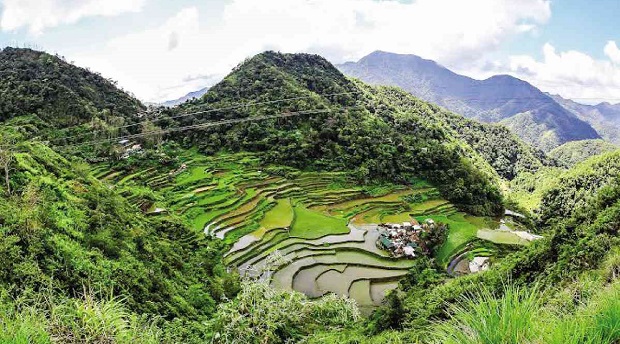
It’s officially summer, with temperatures hitting the mid-30s. Many will most likely be heading to the beaches, as we have some of the best in the world. But how about going to higher ground instead to explore the Cordillera Mountains, site of our world-famous rice terraces?
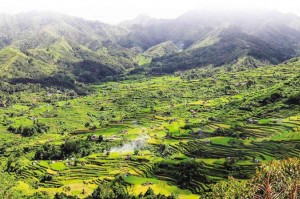
Built by hand by our Ifugao ancestors more than 2,000 years ago, the terraces cover the province of Ifugao like a spider web. While terraces can be found in many parts of the world, ours were built on steeper slopes at higher altitudes. The careful carving along the natural contours of hills and mountains to make the stone- or mud-walled terraced pond fields, coupled with an intricate irrigation system that harvests water from the forests of the mountain tops or muyong, as the locals would call it, reflects a mastery of engineering that has landed the Rice Terraces of the Cordilleras on the list of Unesco’s World Heritage Site.
The rice terraces are actually five clusters spread out to four municipalities. These are Nagacadan in Kiangan, Mayoyao central terraces, Hungduan, and Batad and Bangaan in the municipality of Banaue. The terraces in the town of Banaue are not among them.
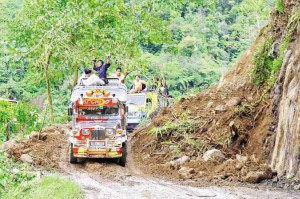
Getting to the terraces in not difficult, as a bus from the Ohayami Bus Company leaves Sampaloc, Manila, daily at 9 and 10 p.m. Cost is P450 one-way.
The journey is a nine-hour overnight drive to Banaue, Ifugao, which should serve as your drop-off point and hub to explore the province. To see all five clusters, you will probably need about four days if you sequence your visit properly.
Arriving in Banaue, the first thing to do is buy your return ticket to ensure your ride back to Manila. Then check into one of the inns in town, like Sanafe or Greenview, and have a quick breakfast.
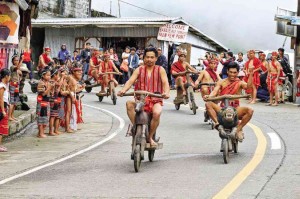
Lodging should cost not more than P400, and P100 should be enough for breakfast with coffee.
Moving around Ifugao, assuming you don’t want to walk, is done via jeep or tricycle, and cost is pretty much the same, since fuel is the basis for their costing.
Walk on the terraces
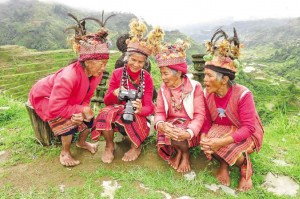
On Day 1, you should visit Hungduan. Its sprawling terraces can be reached in an hour. Here, there is an opportunity to easily walk on the terraces. A staircase gives visitors access to them in less than 10 minutes, and walking through the terraces takes about 45 minutes. If you have more time, you can ask your guide to take you to the hot springs for a refreshing quick dip before heading back.
For Day 2, plan a trip to Mayoyao. It is less than three hours away from Banaue, and it will cost you P6,000 for a same-day round trip. Though you can stay overnight in Mayoyao, it’s best to make
it a day trip. Along the way you will pass the Bangaan rice terraces, also a World Heritage Site. It is best viewed from the road, though you can walk down to the small village in the middle. But don’t spend more than 30 minutes here, as you want to get to Mayoyao as soon as you can, since it is big.
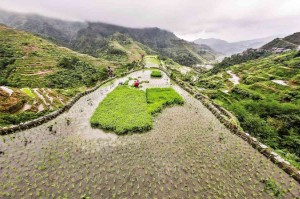
In Mayoyao, you can get a guided tour of the terraces which can take anywhere from one to three hours. There are several viewpoints all around, which are near the roads as well. You can have lunch anywhere in town. Try to leave Mayoyao by 2 p.m., as you want to get back to Banaue while there is still light.
For Day 3, your stop will be Batad. It’s a little over an hour’s ride from Banaue, and a jeep can be hired to take you to the saddle for P2,500. From there, it is a short 30-minute walk to the town proper, where you can get a glimpse of Batad’s famous amphitheater rice terraces.

You can actually see Batad and go back to Banaue on the same day, but this is one place where you will want to stay overnight and explore.
Swimming
Check into one of the inns like Simon’s or Hillside, then get a guide to take you to Tappiyah Falls. Ask your guide to take a high route, across the top of the terraces, then make your way down towards the back of the ridge where the falls are located. Arrange for lunch to be brought from one of the inns, and spend a couple of hours swimming in the cool mountain waters.

The trip to the falls takes about two hours, and going back will take just as long if not longer. But trust me, the experience is worth it.
On your last day, leave after breakfast to make it to Banaue early enough to catch a one-hour jeepney ride down to Lagawe, where you can take a tricycle to Nagacadan, the last of the clusters that make up the heritage sites. You can actually visit this on your first day, as the bus makes a stop in Lagawe before heading up to Banaue, but you usually arrive there around 5 a.m.
If you are willing to wait an hour or so to find someone to drive you up there, this can actually be your first stop. Then you can head up to Banaue via jeepney for P40 and proceed with the rest of your journey.

Whatever you do, take the time to visit Banaue’s three main viewpoints and walk around town. Riding up to see them costs about P1,000—complete with a visit to the town’s museum, where you can learn about the region’s history.
Just don’t forget to be at the bus terminal before 6:30 p.m. so you don’t miss your bus ride back.
Sagada side trip

If you have an extra day to spare, you can actually make your way to Sagada in Mountain Province, just two hours from Banaue. Transportation costs P150 via van to Bontoc, then you transfer to a jeepney for the last 30-minute ride up to Sagada for P50.
Sagada is much smaller than Banaue, so everything is pretty much walking distance. One night is normally enough to see the hanging coffins, and go spelunking or caving.
But, for me, the highlight of Sagada is the food. Most of the establishments serve good stuff, but be sure to check out Masferre, Log Cabin Buffet, Lemon Pie House and Yoghurt House. Who would have thought that this sleepy town high up in the Cordilleras is a food destination?
Jeepneys leave early for Bontoc so don’t forget to get to the terminal before it gets crowded.
Last-minute tips
Traveling around Ifugao can be fun, but can also be quite costly. Transportation to any of the sites ranges from P2,500 to P6,000 for a round-trip journey. Guides, whom you will also need to navigate the numerous trails and terraces, charge anywhere from P1,000 to P2,000 per day.
So, while traveling alone can be exciting, I suggest going with a group to help lessen the cost of travel, as well as for safety.
Lodging and food are quite affordable, with lodging ranging from P250 for homestay to P400 for the inns. Banaue Hotel, which is the only hotel in the area, charges P2,000 inclusive of breakfast, for a room for two.
Food is pretty simple in Ifugao—adobo, fried chicken and chopsuey are some of my favorites and can be easily had for P200 with coffee.
If you are a little adventurous you can ask for pinikpikan, a local delicacy prepared by beating a live chicken with a stick before cooking. The process brings the blood to the skin surface, which is
said to improve the flavor. One whole chicken will cost P800.
As for clothes, it is advisable to expect the best but plan for the worst. Weather can be a little unpredictable up in the mountains, so better be prepared. Cool, light and quick-drying clothing is
advisable, coupled with a nice raincoat. Bring a light sweater if you are the type who gets cold easily.
And, as much as possible, travel light, as you will most likely be carrying your things around most of the time.
So, think you’re up for a mountain adventure?








































